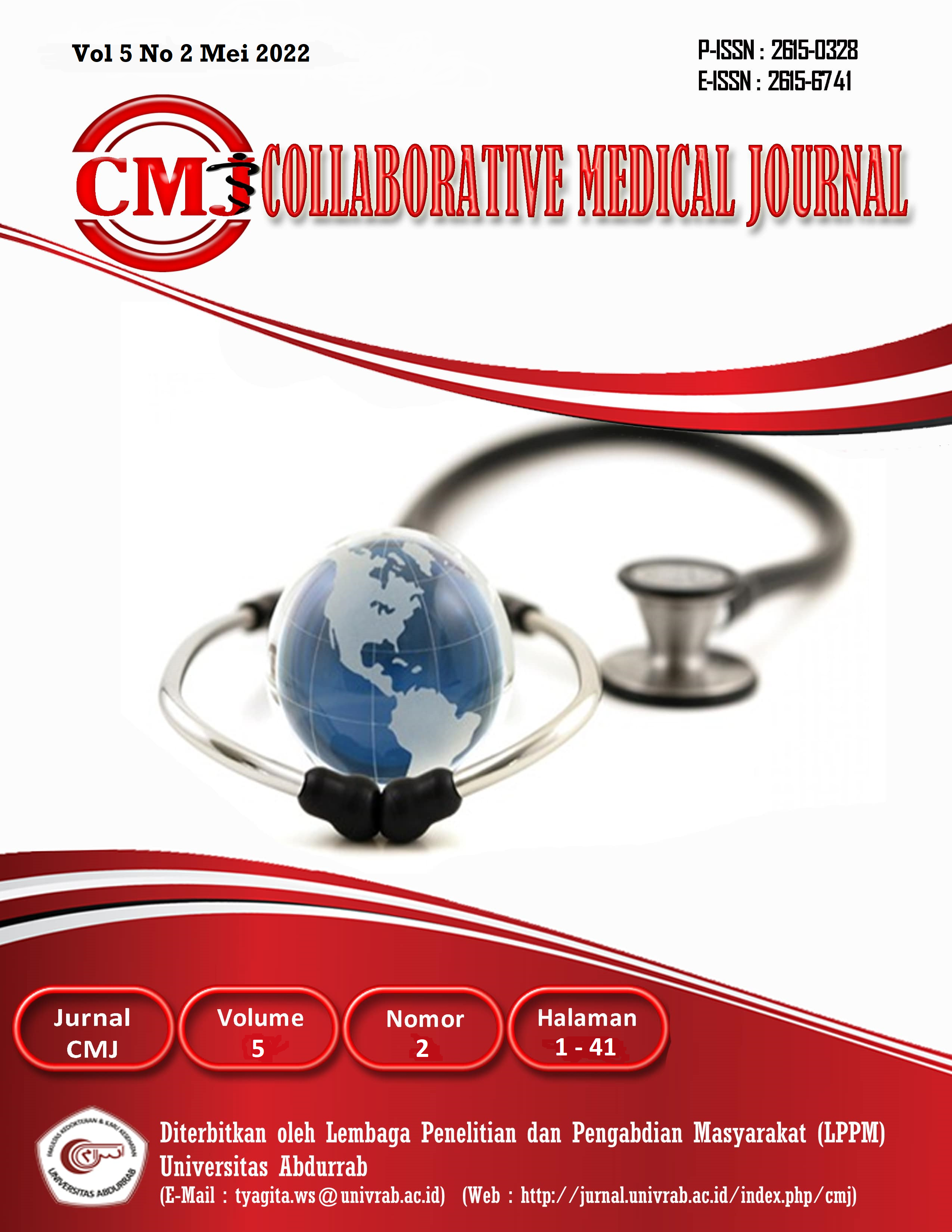PERBEDAAN PERILAKU HIDUP BERSIH DAN SEHAT (PHBS) PADA BALITA DENGAN DIARE DI DESA DAN DI KOTA
Abstract
Diarrhea is a disease characterized by changes in the consistency of the stool apart from the frequency of bowel movements. Diarrhea is the second leading cause of death for children under five in the world. Diarrhea is still a public health problem in developing countries, including Indonesia. Based on data from the Ministry of Health of the Republic of Indonesia 2017, in 2016 Riau Province was in the 10th position out of all provinces in Indonesia with 171,299 diarrhea cases. One of the efforts to prevent and overcome diarrhea can be done by counseling the community to improve Clean and Healthy Life Behavior (CHLB) in daily life. According to the results of Riskesdas 2013, there are differences in the proportion of households with CHLB in both urban and rural areas. The purpose of this study was to determine the difference between CHLB in children under five with diarrhea in the village and in the city. The type of research is analytic observational research, with a cross sectional research design. The sampling technique was quota sampling and statistically tested using the Mann Whitney test. From the results of the research, a p value of 0.065 (p value > 0.05) shows that there is no difference in CHLB in toddlers with diarrhea in rural and urban areas and it can be concluded that there is no significant difference between lifestyle behaviors clean and healthy for toddlers with diarrhea in rural and urban areas.
References
[2] Z. A. Bhutta, J. K. Das, N. Walker, A. Rizvi, H. Campbell, I. Rudan, R. E. Black, "Interventions to address deaths from childhood pneumonia and diarrhoea equitably: What works and at what cost?," Lancet. vol. 381, no. 9875, pp. 1417–1429, Apr 2013.
[3] Dinas Kesehatan Provinsi Riau, Profil Kesehatan Provinsi Riau 2015, Pekanbaru: Dinas Kesehatan Provinsi Riau, 2016.
[4] Kementerian Kesehatan RI, Profil Kesehatan Indonesia Tahun 2016, Jakarta: Kementerian Kesehatan RI, 2017.
[5] D. Maharani, M. A. Yusiana, "Personal Hygiene Ibu yang Kurang Berhubungan Dengan Kejadian Diare Pada Balita di Ruang Anak," Jurnal Stikes, vol.6, no. 1, pp 119-128, Juli 2013.
[6] A. Proverawati, E Rahmawati, PHBS Perilaku Hidup Bersih & Sehat. Yogyakarta: Nuha Cipta, 2012.
[7] Kementerian Kesehatan RI, Riset Kesehatan Dasar (Riskesdas) 2013, Jakarta: Badan Penelitian dan Pengembangan Kesehatan, 2013.
[8] W. I. Mubarak, N. Chayatin, B. A. Santoso, Ilmu Keperawatan Komunitas: Konsep dan Aplikasi Buku 2. Jakarta: Salemba Medika, 2009.
[9] S. Notoatmodjo, Ilmu Perilaku Kesehatan. Jakarta: Rineka Cipta, 2014.
[10] Savitri D. Faktor-faktor yang brhubungan dengan pemanfaatan pelayanan Puskesmas Sukamaju oleh peserta Jamkesmas di Kota Depok Provinsi Jawa Barat Tahun 2011. Tesis FKM UI. 2011
[11] T. Litman, "Evaluating Public Transportation Health Benefits," Victoria Transport Policy Institute 2015, Available: https://trid.trb.org/ view/925993
[12] Y. C. Eka, Kristiawati, P. Diyan, "Faktor-faktor yang mempengaruhi perilaku kader KIA dalam eteksi dini perkembangan balita di posyandu wilayah kerja Puskesmas Babat Lamongan," Indonesian Journal of Community Health Nursing, vol. 2, no. 2, pp. 57–66, Feb 2014.
[13] E. Irawati, Wahyuni, "Gambaran karakteristik keluarga tentang Perilaku Hidup Bersih dan Sehat (PHBS) pada tatanan rumah tangga di Desa Karangasem wilayah kerja Puskesmas Tanon II Sragen," Gaster, vol. 8, no. 2, pp. 741-749, Agust 2011.
Copyright (c) 2022 Collaborative Medical Journal (CMJ)

This work is licensed under a Creative Commons Attribution-NonCommercial-ShareAlike 4.0 International License.
1. Copyright of all journal manuscripts is held by the Collaborative Medical Journal (CMJ)
2. Formal legal provisions to access digital articles of electronic journal are subject to the provision of the Creative Commons Attribution-ShareAlike license (CC BY-NC-SA), which means that Collaborative Medical Journal (CMJ) is rightful to keep, transfer media/format, manage in the form of databases, maintain, and publish articles.
3. Published manuscripts both printed and electronic are open access for educational, research, and library purposes. Additionally, the editorial board is not responsible for any violations of copyright law.
licensed under a Creative Commons Attribution-ShareAlike 4.0 International License.
 PDF
PDF
 Abstract views: 75
Abstract views: 75
 downloads: 95
downloads: 95

 :
:




